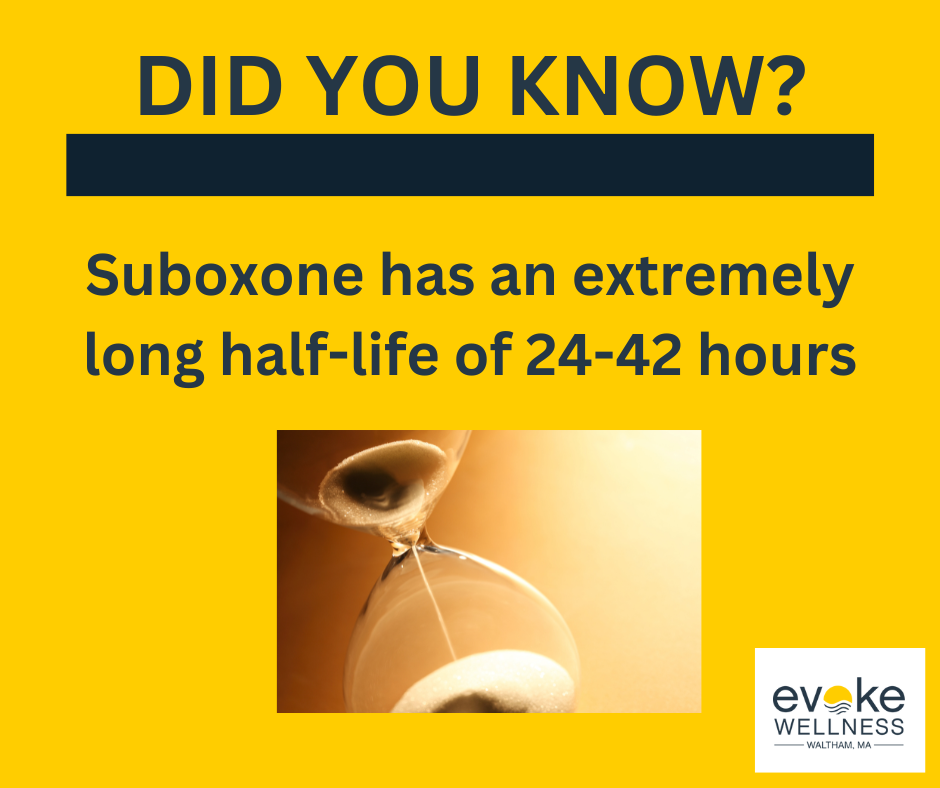You may be reading this article because you or someone you care about is taking Suboxone. Suboxone is a prescription medication used to treat opioid dependence and addiction. It works by preventing withdrawal symptoms and reducing cravings. For more information and resources on the subject call us at (833)-287-7223 today or reach out online. Together, we will learn key facts about Suboxone including:
- What Suboxone is and how it works
- Use in addiction treatment programs
- How long Suboxone stays in your system
- Withdrawal timeline and symptoms after stopping
- Safe ways to stop taking Suboxone
Suboxone Has a Unique Mechanism of Action
Suboxone contains buprenorphine and naloxone. Buprenorphine partially activates opioid receptors, reducing cravings and withdrawal. Yet it produces a “ceiling effect” – diminishing euphoric effects.
This unique mechanism provides relief while limiting misuse potential. Naloxone blocks opioid receptors if Suboxone is misused, deterring abuse.
Suboxone Can Also Pose a Risk for Addiction and Overdose
Despite its benefits, it’s crucial to understand that Suboxone itself carries a risk of addiction and overdose. While less potent than other opioids, taking too much Suboxone or misusing it can lead to respiratory depression and other dangerous side effects.
Proper medical supervision and adherence to prescribed dosages are essential. Never adjust your dosage or discontinue use without consulting your healthcare provider, as withdrawal symptoms can be severe. Responsible use under a doctor’s guidance can minimize these risks while aiding recovery.
Suboxone Is Not Without Side Effects and Withdrawal Effects
Suboxone treatment comes with potential side effects and withdrawal symptoms. You may experience nausea, headaches, sweating, or insomnia while taking it. Discontinuing Suboxone too quickly risks uncomfortable withdrawal – muscle aches, diarrhea, anxiety. Tapering slowly under medical supervision is crucial for safe detox.
Suboxone Treatment Is Administered in Four Phases
Suboxone treatment follows a structured path with four key phases:
Induction Phase
This initial stage focuses on transitioning you safely onto Suboxone. Proper timing and dosing are critical to avoid precipitated withdrawal.
Stabilization Phase
During this phase, your doctor will adjust your Suboxone dosage until withdrawal symptoms are relieved without oversedation.
Maintenance Phase
The maintenance phase allows you to continue taking a stable Suboxone dose long-term while receiving counseling and support.
Tapering Phase
When appropriate, your dose will be gradually lowered to allow you to discontinue Suboxone treatment comfortably.
How Long Suboxone Stays in Your System Depends on Various Factors
The duration Suboxone remains detectable in your system hinges on several factors. Its half-life, your metabolism, dosage, and frequency of use all play a role.
Metabolism and Dosage
- Higher doses typically lead to longer detection windows.
- Faster metabolisms process and eliminate substances quicker.
Frequency of Use
- Regular Suboxone use results in accumulation, prolonging its presence.
- Infrequent or single-time use allows faster elimination from the body.
Type of Drug Test
- Suboxone shows up on standard drug screens for a varying duration based on the test.
- Blood and saliva tests detect it soonest, while hair tests reveal longer-term use.
Suboxone Should Never Be Mixed With Alcohol
Mixing Suboxone with alcohol is extremely dangerous. Both substances depress the central nervous system, amplifying sedative effects. This increases the risk of life-threatening respiratory depression, coma, and death.
Never consume alcohol while taking Suboxone. Doing so can also trigger intense cravings and relapse for those in an opioid addiction treatment program. Stay safe – abstain from alcohol entirely during Suboxone treatment.
There Are Certain Medications That You Cannot Take With Suboxone
You must avoid taking other opioid medications while on Suboxone, as this could cause precipitated withdrawal symptoms or an overdose. Benzodiazepines like Xanax, Valium, and Klonopin should also be used with caution due to increased risk of respiratory depression.
Other medications that may interact negatively include some antidepressants, anticonvulsants, antibiotics, antifungals, and HIV medications. Always consult your doctor before combining
Suboxone with other prescribed or over-the-counter drugs to ensure safety.
Suboxone FAQs
How does Suboxone work?
Suboxone contains buprenorphine and naloxone. Buprenorphine is a partial opioid agonist that helps reduce cravings and withdrawal symptoms. Naloxone is an opioid antagonist that deters abuse.
How long does Suboxone stay in your system?
Suboxone has an extremely long half-life of 24-42 hours. It can be detected for several days to over a week after last use, depending on the test.
Is Suboxone treatment effective?
Yes, Suboxone is an evidence-based medication-assisted treatment (MAT) that significantly improves outcomes for opioid use disorder when combined with counseling and behavioral therapies. MAT helps sustain recovery.
How long is Suboxone effective in the body?
Suboxone, a combination of buprenorphine and naloxone, is a medication used to treat opioid addiction. Its effects in the body can last for an extended period:
- Buprenorphine has a half-life of 24-42 hours, meaning it takes this long for half the dose to be eliminated from the body.
- However, Suboxone’s therapeutic effects typically last 24-36 hours due to its slow dissociation from opioid receptors.
This relatively long duration of action allows for once-daily dosing under normal circumstances. The exact timeframe can vary based on individual factors like metabolism rate and dosage amount.
So while buprenorphine provides round-the-clock relief of opioid withdrawal symptoms and cravings, the naloxone component has a negligible duration in therapeutic use.
Duration of Effects
The effects of Suboxone typically last 24-36 hours after administration. However, individual differences exist based on metabolism, dosage, and other factors. Consult your physician for personalized guidance on proper usage.
Factors Affecting Duration
Several factors influence how long Suboxone remains active, including:
- Dosage amount
- Metabolic rate
- Age and weight
- Liver and kidney function
With proper dosing under medical supervision, Suboxone allows for once-daily dosing to manage withdrawal symptoms and cravings.
Medical Detox
In a supervised medical detox program, medications may be prescribed to alleviate severe withdrawal symptoms and cravings. Antidepressants, anti-anxiety drugs, or sleep aids can help stabilize your condition.
Inpatient Rehabilitation
Inpatient or residential treatment provides a supportive, drug-free environment for recovering from cocaine addiction. Intensive individual therapy programs, counseling, and 24/7 care address the physical, psychological, and behavioral aspects of addiction.
Comprehensive Care Approach
Suboxone is most effective when integrated into a comprehensive care plan that includes counseling, support groups, and lifestyle modifications. Treatment programs emphasize a holistic approach, addressing the physical, psychological, and social aspects of addiction for sustainable recovery.
Comprehensive Treatment
Medication like Suboxone works best when combined with counseling and other behavioral therapies as part of a comprehensive treatment program. These combination approaches show greater success rates in overcoming opioid addiction long-term.
Suboxone Usage in Substance Abuse Treatment Programs
Suboxone is widely utilized in various substance abuse treatment programs, playing a pivotal role in combating opioid addiction and promoting long-term recovery. This medication combines buprenorphine, a partial opioid agonist, and naloxone, an opioid antagonist, providing a comprehensive approach to addiction management.
Opioid and Similar Addiction Treatment Programs
In opioid addiction treatment programs, Suboxone serves as a vital component of medication-assisted therapy (MAT). By reducing cravings and withdrawal symptoms, it helps individuals stabilize and engage more effectively in group therapy counseling programs and behavioral therapies.Such behavioral therapies include the following:
- Cognitive-behavioral therapy (CBT) which helps identify the root causes that led to addiction.
- Suboxone serves as a vital component of medication-assisted therapy (MAT). By reducing cravings and withdrawal symptoms, addiction.
- Medical Detox
- Inpatient Rehabilitation
- Inpatient or residential treatment provides a supportive, drug-free environment for recovering from cocaine addiction. Intensive individual therapy programs, counseling, and 24/7 care address the physical, psychological, and behavioral aspects of addiction.
Conclusion
You now have a solid understanding of what Suboxone is, why it is prescribed, and how long it stays in your system. This knowledge puts you in a position to make informed decisions about
your treatment options. There are many high-quality addiction treatment programs available that incorporate Suboxone as part of a medication-assisted treatment plan. Do your research to find the right treatment center for your needs. With the right help and support, you can overcome addiction, improve your health and quality of life, and look forward to a brighter future.
Begin Your Journey with Evoke Wellness at Waltham
If you or a loved one is considering outpatient treatment, Evoke Wellness at Waltham invites you to contact us. Our compassionate team is ready to answer your questions, discuss your needs, and help you take the first steps toward recovery. At Evoke Wellness, you will find more than just a treatment program – you’ll discover a community dedicated to your wellness and success. Together, let’s embrace the journey to recovery and the promise of a new beginning. Call us at (833)-287-7223 today or reach out online.



